On November 12, sponsored by the Provincial Association for Science and Technology, the Provincial Department of Science and Technology, and hosted by Guangdong Science and Technology Newspaper, Harbin Institute of Technology (Shenzhen), the Provincial Aeronautical Society, the Provincial Environmental Science Society, and the Guangdong Science and Technology Journalists Association, the 2020 Lingnan Science Forum series of activities ——Guangdong-Hong Kong-Macao Greater Bay Area Space Technology New Heights Forum was held in Nansha, Guangzhou. Wei Fengsi, academician of the Chinese Academy of Sciences, dean of the Institute of Space Science and Applied Technology of Harbin Institute of Technology (Shenzhen), and academicians and experts such as Wang Chi, academician of the Chinese Academy of Sciences and director of the National Space Science Center of the Chinese Academy of Sciences, gathered together to create space technology in the Guangdong-Hong Kong-Macao Greater Bay Area New Heights offers ideas and suggestions.
With the integration and development of high-resolution earth observation technology, global satellite navigation and positioning technology, satellite communication technology, drone technology, mobile Internet, cloud computing and other new technologies, the space information industry has become an important engine for new economic growth. The Guangdong-Hong Kong-Macao Greater Bay Area has good development potential in these fields and will become an important supporting platform for the country to develop the spatial information industry and occupy the commanding heights of the new economy. This forum mainly focused on "space science and technology", a strategic, fundamental and forward-looking major scientific and technological subject for exchanges, and explored ideas for the diversified development of China's large space industry, so as to build a world emerging industry and advanced industry for the Guangdong-Hong Kong-Macao Greater Bay Area. Manufacturing and modern service industry bases, creating strategic emerging industrial clusters with international competitiveness, turning space technology into a new driving force for economic and social development, promoting high-quality development in Guangdong, innovation-driven development, and accelerating international technological innovation in the Guangdong-Hong Kong-Macao Greater Bay Area The construction of the Center and Shenzhen Pilot Demonstration Zone provides decision-making reference.
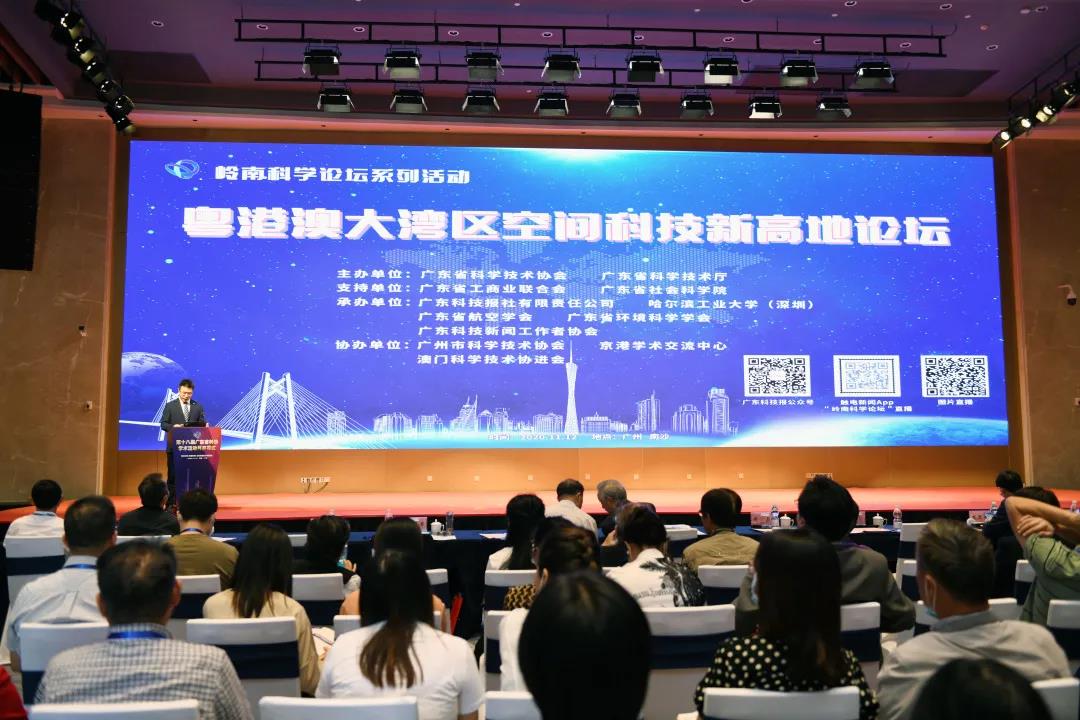
Site of the Guangdong-Hong Kong-Macao Greater Bay Area Space Technology New Heights Forum
Academician Wei Fengsi: Build a "Spatial Brain" and Improve Space "Soft Power"
"Digital space is the call of human beings to enter the digital era and the era of space and large-scale aerospace integration and development of the historical convergence period, is the new strategic heights of space technology entering the digital and intelligent new era", in the construction of "digital space" and "spatial brain" In the keynote report, Wei Fengsi stated that the digital space is to seek sustainable economic and social development from space, to make up for the major "shortcomings" of China's space activities, and to open up the space digital economy industry. It is a major strategic move to be intelligent, to basically realize socialist modernization, to break the current world spatial pattern, and to maintain world peace and development.
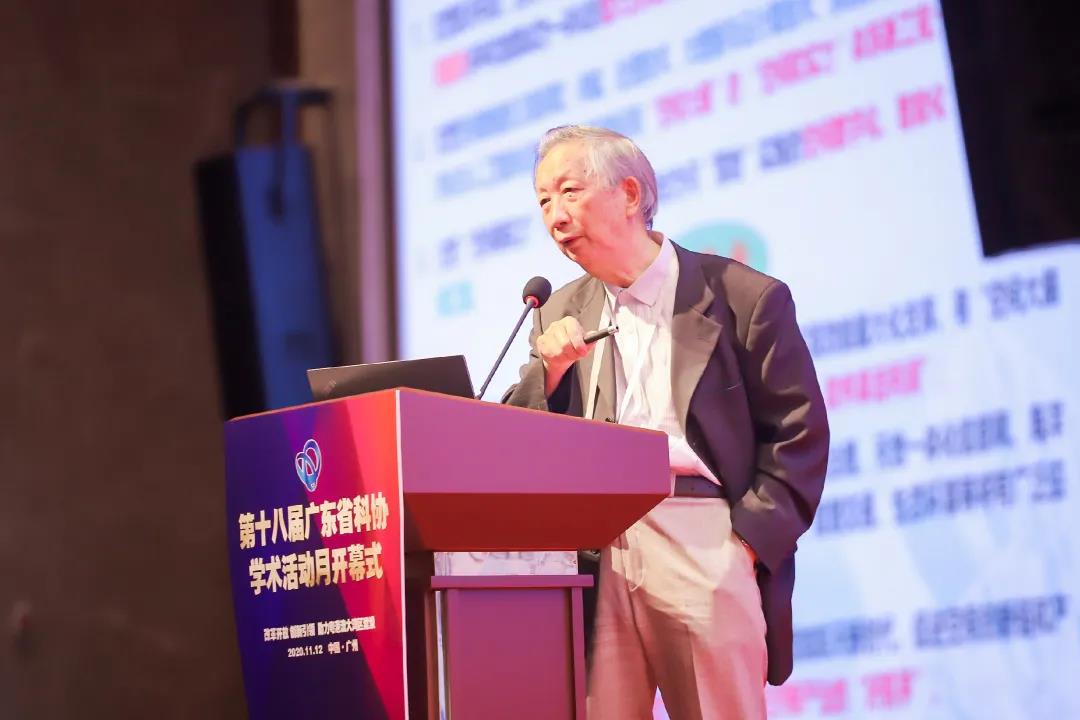
Wei Fengsi made a report on "Building a "Digital Space" and Building a "Spatial Brain"
Academician Wang Chi: my country's space science satellites have made new progress
The space science pilot project (Phase I) deployed four dark matter particle detection satellites "Wukong", quantum science experimental satellites "Mozi", "Shishi No. 10" returnable microgravity science experimental satellites, and hard X-ray modulation telescope satellites "Huiyan" Space science satellites have made major scientific discoveries and technological breakthroughs. In the keynote report of the "China Space Science Satellite Program", Wang Chi introduced the connotation of space science, the latest progress in space science, and the latest achievements and prospects of my country's implementation of space science pilot projects.

Wang Chi made a report on "China Space Science Satellite Program"
Professor Rong Qiliang of Hong Kong Polytechnic University: High-tech aerospace technology can be converted to civilian use
Rong Qiliang, academician of the Hong Kong Academy of Engineering, Chair Professor (Precision Engineering) and Deputy Head of the Department of Industrial and Systems Engineering, Hong Kong Polytechnic University, made a special topic sharing on "Frontier Research of Manned Exploration of Mars", introducing future manned missions to Mars Technological research and how to transform space technology into civil industry.

Rong Qiliang
Associate Professor Zhang Xiaoping of Macau University of Science and Technology: China has outstanding achievements in deep space exploration
Zhang Xiaoping, associate professor and assistant director of the State Key Laboratory of Lunar and Planetary Sciences, Macau University of Science and Technology, and leader of the planetary surface environment and small celestial bodies research group, from the overview of deep space exploration, the results of China's deep space exploration, and future mission planning, summary and prospects. In the face of deep space exploration missions, the scientific and technological achievements and future deep space exploration mission ideas are briefly introduced.

Zhang Xiaoping made a report on "Achievements and Prospects of China's Deep Space Exploration"
Digital Space Application and Industry
In the report, Xu Guochang, director of the Navigation and Remote Sensing Laboratory of Harbin Institute of Technology (Shenzhen), provided services from satellite navigation and remote sensing emergency monitoring and early warning technology, satellite remote sensing (spectral radar), high score and global 50 years of remote sensing data applications, and smart city traffic indoor positioning platform services. , The research and development of global navigation and full space remote sensing technology, and the construction of satellite remote sensing technology industry have been elaborated.
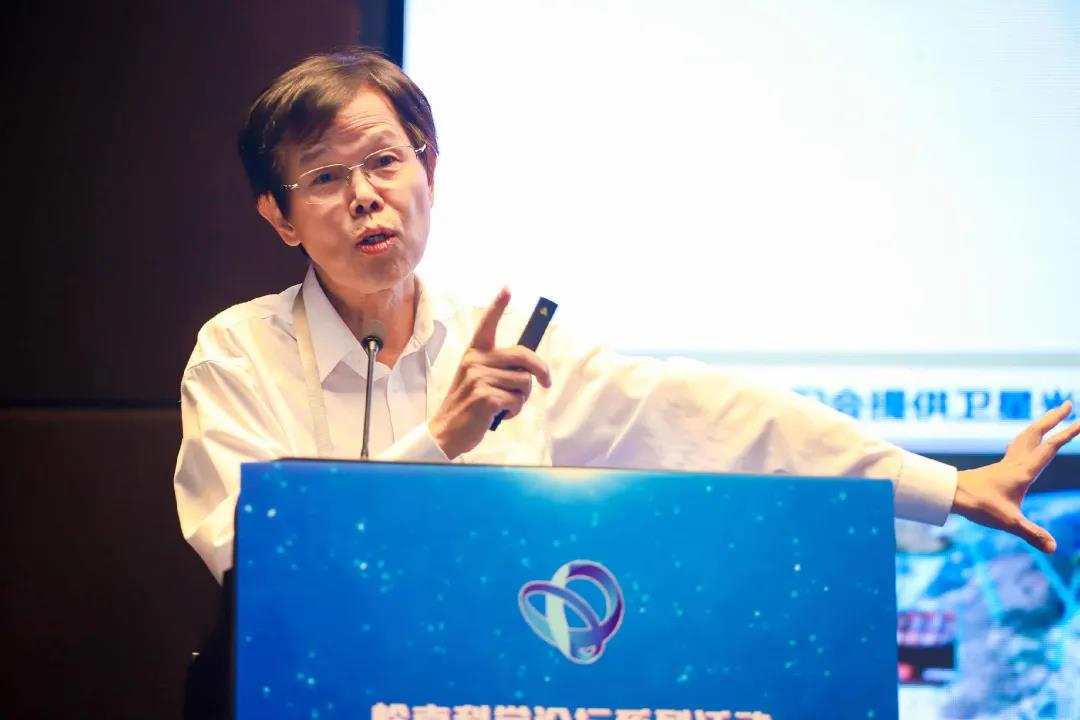
Xu Guochang made a report on "Navigation and Remote Sensing Satellite Technology Industry Construction"
Feng Xueshang, director of the Space Storm Laboratory, Harbin Institute of Space Science and Technology, Harbin Institute of Technology (Shenzhen), explained in the report space weather and its research significance, space weather coronal interplanetary numerical simulation research tasks, and physics-based interplanetary solar storm numerical value Current status of simulation research, physics-based data-driven numerical model research and endeavors.
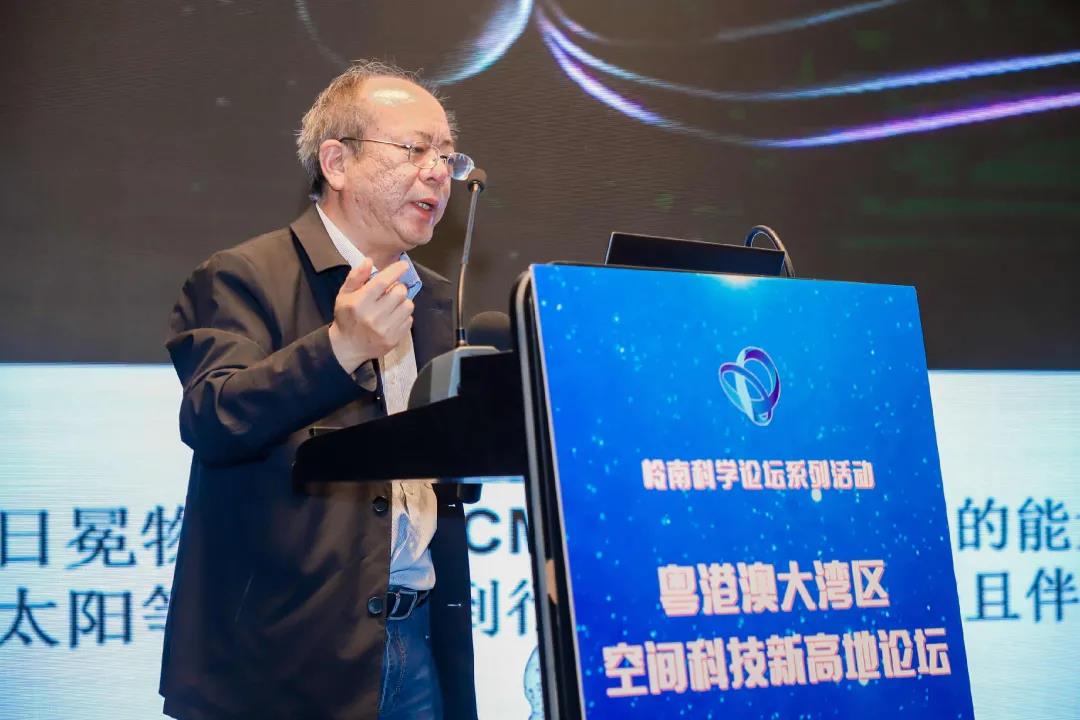
Feng Xueshang made a report on "Space Weather Coronal Interplanetary Numerical Simulation Research"
Wang Shijin, director of the Harbin Institute of Technology (Shenzhen) Space Environmental Application Joint Laboratory, said that the digital space strategy, as well as the digital space twin and its technological system integrating the world and the earth, will play an important role in the era of information integration.
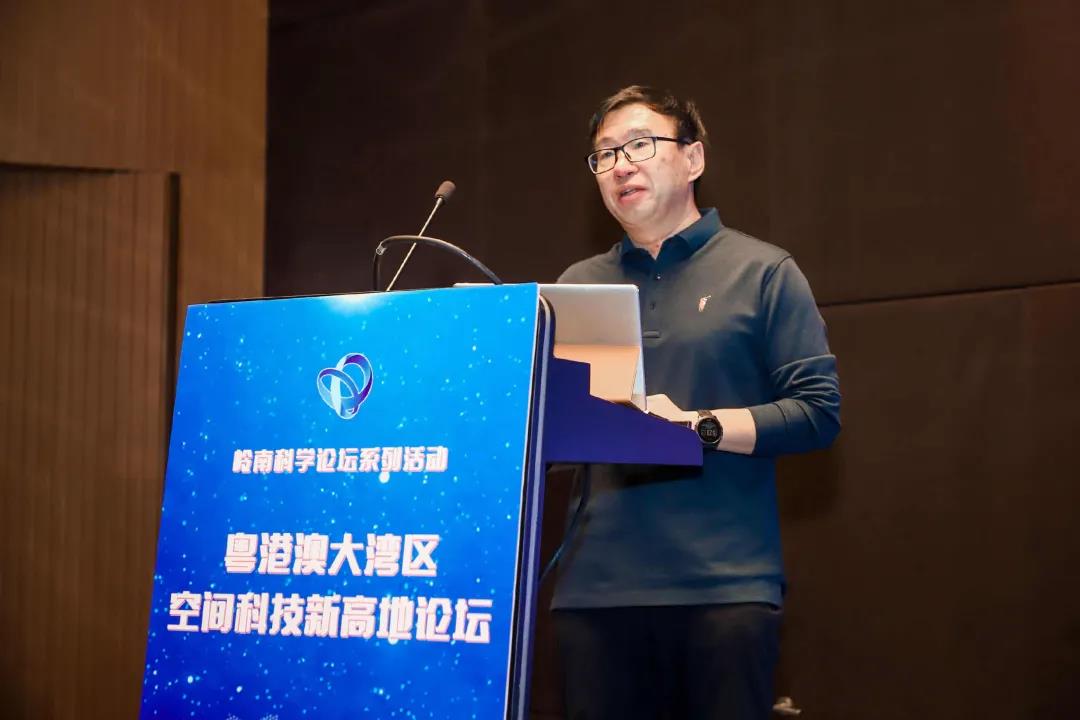
Wang Shijin's report on "Digital Space, Twin System and Its Applications"
Digital space and aviation emergency rescue
In response to the problems that universities rely on traditional fixed-point cameras and human patrols, such as inadequate monitoring, untimely response, and incomplete information acquisition, Sun Changjiang, dean of the School of Aviation, Zhuhai College of Beijing Institute of Technology, said that new technologies and new methods are used to innovate campus security in universities. And the construction of an emergency command system is an inevitable way to improve campus security in the new era.
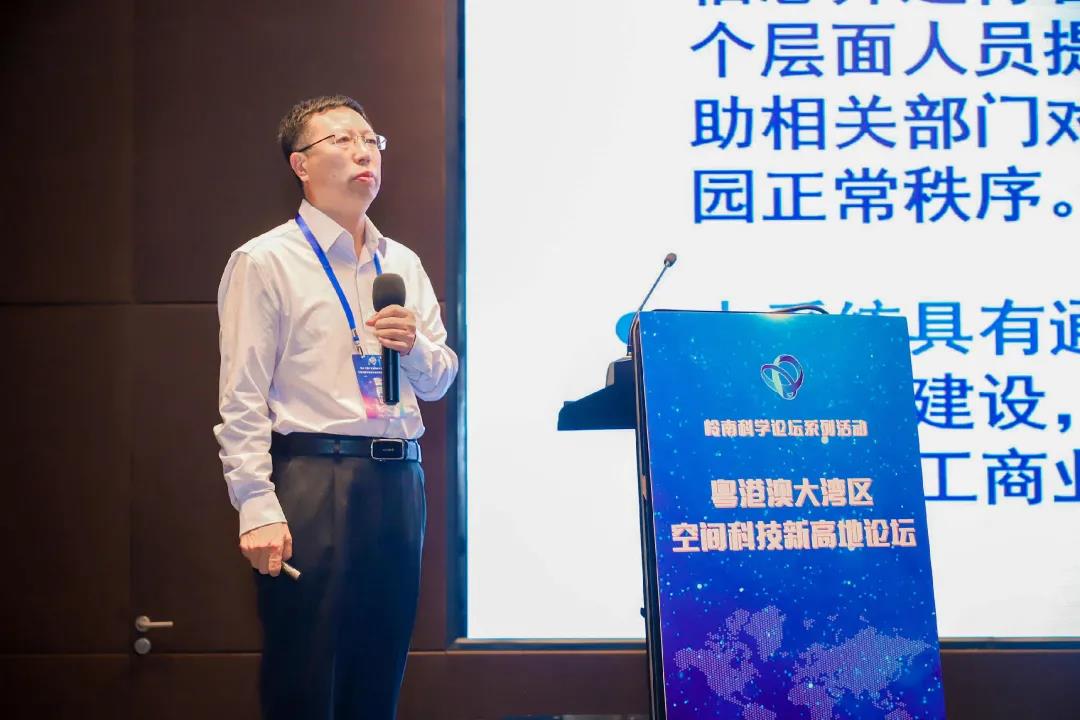
Sun Changjiang made a report on "UAV Campus Security and Emergency Command System Construction and Practice"
Fighting against natural disasters is an important issue for human survival and development. Shen Xuhui, chief engineer of the National Academy of Natural Disaster Prevention and Control, mentioned that we need to search for and discover the cryptographic information of natural disasters in the digital space.
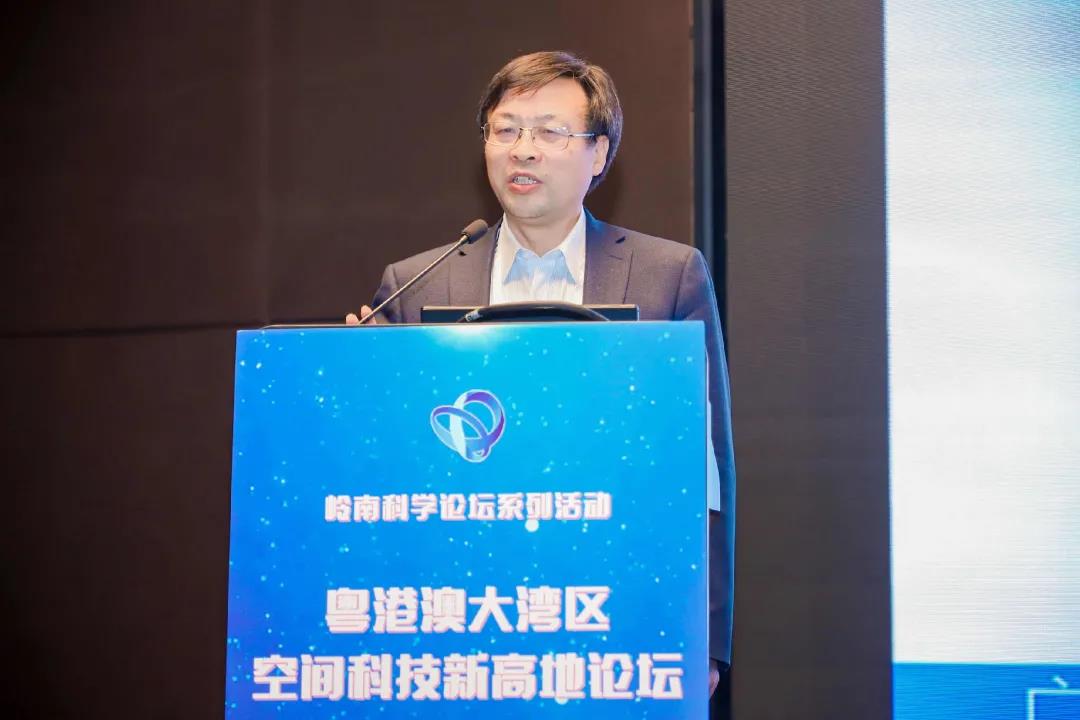
Shen Xuhui made a report on "Application Thinking of Digital Space in the Field of Emergency Management"
Professor Zhang Bangchu of the School of Aeronautics and Astronautics of Sun Yat-sen University adopts the "physical entity-virtual model-twin data-application service" of the digital twin. The multi-layered mapping mechanism can realize the "physical integration, model integration, data integration, and service integration" of aviation emergency rescue. The organic integration of the four dimensions provides effective support.

Zhang Bangchu's report "Research on Simulation Deduction Technology of Aviation Emergency Rescue Based on Digital Twins"
Digital Space and Environmental Monitoring
Zhao Zhengyu, Director of the Low-latitude Space Environmental Monitoring and Application Laboratory, Harbin Institute of Space Science and Application Technology, Harbin Institute of Technology (Shenzhen), focused on the Aerospace Binocular Project-Southern Low-latitude Space Environmental Monitoring and Application Service System, including its scientific goals and applications Goals and project goals, as well as the main construction content.

Zhao Zhengyu made a report on "Aerospace "Binoculars" and Industrialization Prospects"
Harbin Institute of Technology (Shenzhen) Institute of Space Science and Application Technology, Assistant Professor Yu Zhibin said that single-photon atmospheric radar can achieve high-precision detection of soft target information such as atmospheric wind field, pollution sources, and cloud distribution. The most ideal equipment for scale space monitoring.

Yu Zhibin made a report on "Quantum Lidar Ecological Environment Guarantee System Construction"
A team representative of Chen Duohong, the head of the Air Quality Early Warning and Forecast Section of Guangdong Environmental Monitoring Center and a professor-level senior engineer, said that the problems in Guangdong's ecological environment monitoring are concentrated in two major aspects: the overall lack of service supply and the level of support that needs to be improved.
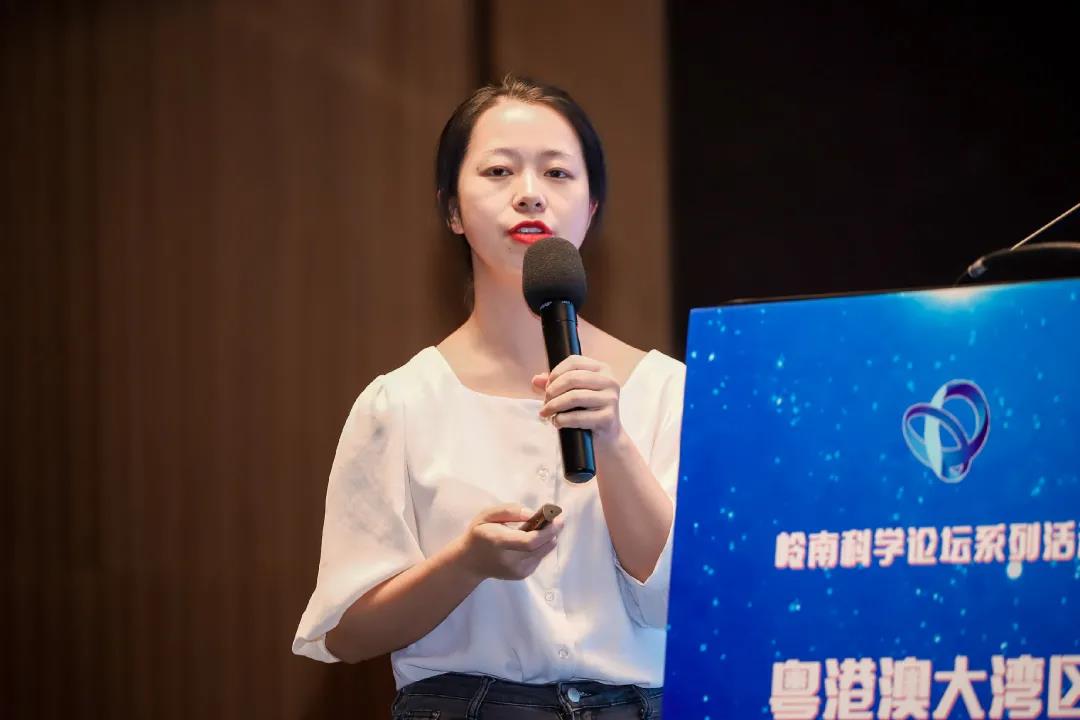
Chen Duohong's team's representative report "Development and Prospects of Environmental Monitoring in Guangdong Province"
Zhou Chen, a professor and doctoral supervisor of the School of Electronic Information of Wuhan University, mentioned in the report that with the increasing development of communications, electromagnetic radiation safety and electromagnetic spectrum management have become important factors to be considered in the construction of smart cities.
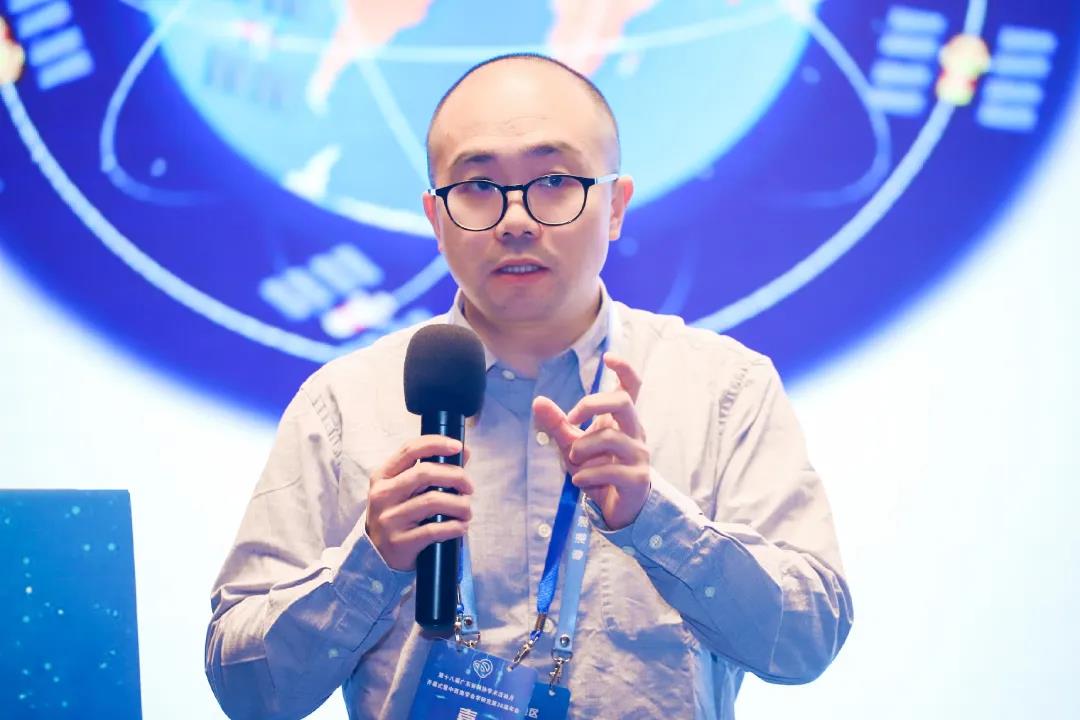
Zhou Chen made a report on "City Digital Electromagnetic Environment Map"
On November 13, the participating representatives visited and inspected Guangzhou Zhonghaida Satellite Navigation Technology Co., Ltd. and exchanged views on the application of satellite navigation technology achievements.

Participants visited and inspected
